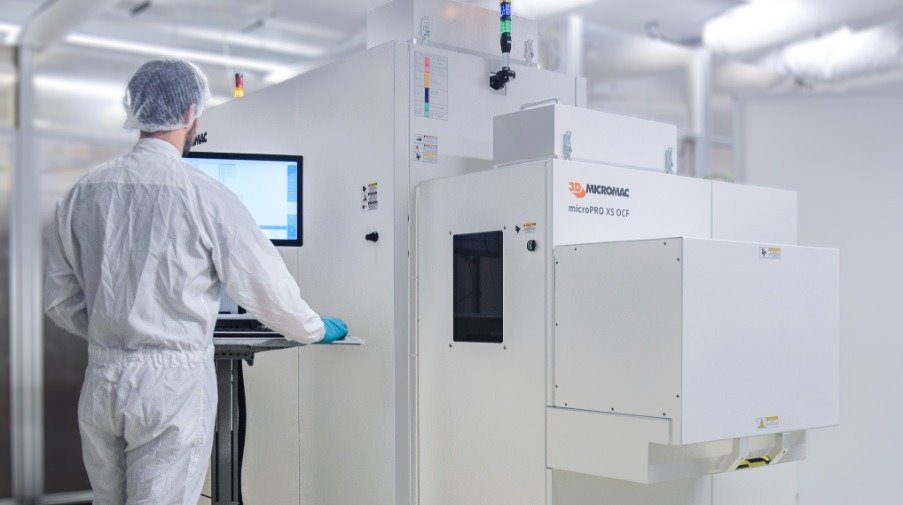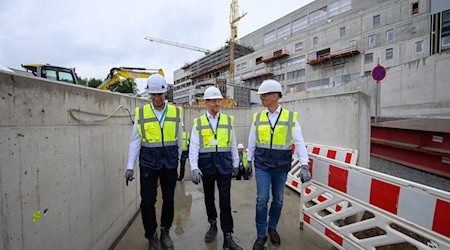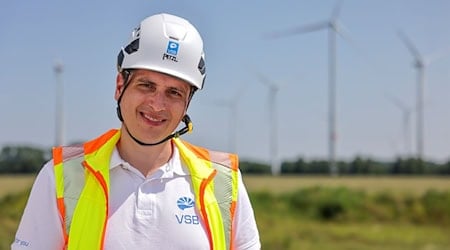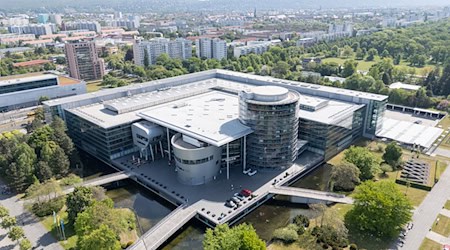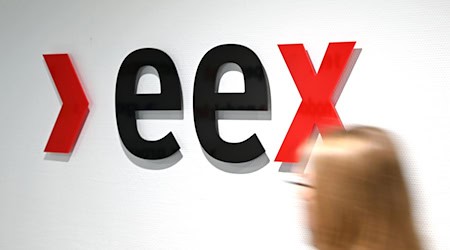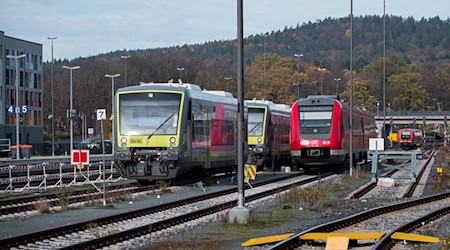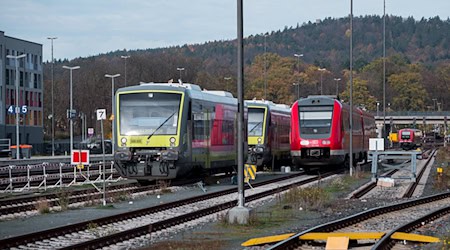As a pioneer in laser micromachining, 3D-Micromac AG is the focus of our latest interview on DieSachsen.de. This Saxon company has established itself as an innovation leader in high-precision laser technology and has a significant influence on various industries. From developing revolutionary micromachining machines to manufacturing components at the nanometer level, 3D-Micromac AG is a brilliant example of German engineering and innovative spirit. In this exclusive interview, CEO Uwe Wagner gives insights into sources of inspiration, challenges and the future of laser technology.
How did the idea of founding 3D-Micromac AG come about and what specific challenges in laser micromachining motivated you to do so?
More than 20 years ago Ultra-short pulse and picosecond lasers came onto the market as two new forms of laser.These opened up completely new fields of application for lasers in the processing of materials. At that time, most of these applications were still in the development stage - but it was foreseeable what industrial potential they would have. So the idea was born to introduce the industry to machines and process solutions for laser micromachining and thus enable promising innovations for the future. Incidentally, even today the full potential of these lasers has not yet been exhausted and we are still at the beginning of development.
Your company emphasizes the importance of efficient and user-friendly processes. How does this differentiate you from other providers in the field of laser micromachining?
We see ourselves as a partner for companies that are looking for new processes for innovative products or production technologies - our laser micromachining processes enable the manufacture of new products or revolutionize the manufacturing processes of established products in terms of accuracy, quality and throughput or other aspects such as resource conservation, etc. The content of the development is typically at the upper end of the complexity scale. We deliver what others cannot.
The implementation of innovations for production solutions requires a high degree of mutual trust between us and our customers, because every development also involves risk. We listen carefully to our customers and try to fully understand their expectations and requirements. Only then can we develop an optimal solution. This means that we are always very close to the user and know their requirements precisely. This type of joint work is one of 3D-Micromac's strengths. It sets us apart from other competitors.
The development of processes, machines and systems at the highest technical level is a core aspect of your company. What technological challenges do you face most frequently?
The biggest challenge is certainly that our development goals are so-called "moving targets". This means that we have to develop a machine, including the laser process, without the product that our customer wants to produce on this machine already existing. Sometimes it is not even clear which materials will be used. This often leads to adjustments during the implementation phase. However, even the smallest changes in requirements can have a significant impact on the laser process.
These widely varying requirements and expectations place the highest demands on the technical expertise of all areas of the company. Our advantage is that we have an extremely broad technological base. This means that we are not limited to one target market, but that our machines are used in the semiconductor, photovoltaic, medical and display industries, etc. This allows us to benefit from synergy effects. At the same time, each market has its own framework conditions and challenges that we have to face. These can be biocompatibility requirements in medical technology, the highest purity classes in the semiconductor sector or maximum machine productivity in solar module production.
However, what all markets have in common is that the spiral of quality, requirements and accuracy continues to rise. Our company name includes the decimal prefix "micro". By now the tolerances of many of our machines are in the nanometer range, i.e. an order of magnitude finer.
How can both large industrial companies and smaller businesses benefit from 3D-Micromac AG's solutions?
Our production service is a good example of our customer focus. In the laser industry, "job shop" is now an established term for this service. We have positioned ourselves as a partner for our customers in order to be able to offer suitable support at every stage of the entire project realization. The "job shop" is usually at the beginning, for example if the required production volumes are not sufficient to justify a machine investment. We support our customers with feasibility studies, prototype production, but also with the production of small series or even the complete outsourcing of the corresponding process steps to our "Application Center".
But 3D-Micromac also supports its customers with all the necessary maintenance and services for mass production on our machines practically anywhere in the world.
What are the main advantages of laser micromachining compared to other micromachining technologies?
If a laser process is chosen, the main advantage from our point of view is that we have the chance to win an order. (laughs)
If I had to answer the question from a technical perspective, it would be more difficult because there is no universally valid answer to this question. As I mentioned, the markets and applications differ enormously. Advantages and possibly disadvantages are only ever valid for the respective process, the respective application and the respective market.
However, this can also mean that some processes require the use of lasers for micro material processing without any alternative. We see it in everyday life: None of our cell phones could be manufactured without laser micromachining, to name just one example.
A laser, which in the end is also just a tool with special properties, can just be finely dosed and positioned very precisely. To achieve the desired beam-substance interaction, the laser type can be selected along pulse length, repetition frequency, laser power or wavelength. This results in almost infinite possibilities in micromaterial processing.
As mentioned at the beginning, we are still at the beginning. More applications and new processes are constantly being added.
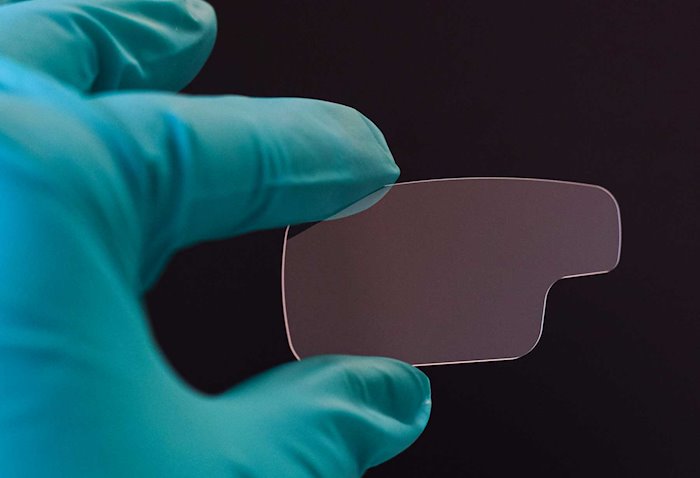
Spectacle lens for AR and VR applications / 3D-Micromac AG
Saxony is known for its innovative strength. How do you see your company's role within the Saxon and German industrial landscape?
Only a fraction of our customers are based in Germany or Saxony. We are proud to work with the world's major companies and contribute to their success worldwide.
In contrast, our supplier and partner network is much more regional. Here, we benefit from this innovative strength and the historically strong affinity with mechanical engineering and the ever-growing semiconductor industry in the Dresden area.
What special challenges or advantages does the location of Saxony bring for your company?
Here in Chemnitz, we actually experience both: challenges and advantages.
To start with the challenges: The transport links are not ideal. Almost 75 percent of our orders are for export - that means a lot of traveling. However, the nearest internationally relevant airport is far away and is very difficult to reach from Chemnitz. The fact that the city is not connected to the ICE network further exacerbates the situation.
One advantage is the very high level of skilled personnel available in Saxony, which is the sole reason for our good market position. With the Chemnitz University of Technology as a direct neighbor, we are also a potential employer for many students and graduates.
There are a large number of other innovative companies based in the Saxony region, especially in the field of semiconductor technology. And the resulting network is a great help for further development. The same applies to the institute landscape in Central Germany with the Fraunhofer ENAS, the ZFM, the Fraunhofer Institutes in Dresden and Halle, or the Laserinstitut Mittweida, with some of which we also have partnerships.
How has the global economic situation affected your business activities and what adjustments have been made to meet the challenges?
The current multiple crisis situation is having a significant impact on our operational business activities - probably even more than ever before.
During the lockdown period, we set up a crisis team that had to prepare corporate decisions almost daily during the height of the coronavirus pandemic.
While no crisis team has been set up to deal with the current challenges on a global political and economic level, the short timeframe for corporate decisions and the dynamic nature of day-to-day business have remained. The framework conditions are constantly changing, often in a fundamental way.
Does your company benefit from collaborating with other innovative companies in Saxony?
Developments and innovations in the technological environment today are almost always the result of good teamwork. This is also the case for us. We work together with industry and institutional partners in funded projects. For some time now, however, we have also increasingly benefited from direct industry-funded technology development. However, the network and cooperation go well beyond national borders.
What importance do you attach to sustainability and environmental awareness in the development and application of your technologies?
Those who turn a blind eye to this issue have not understood the signs of today’s situation. We take sustainability very seriously and try to reduce our ecological footprint and protect the environment. For our company, we feel that this is part of our social responsibility.
We also frequently help to conserve resources with the production processes we develop: For example, we have developed laser ablation systems in which the material removed by the laser beam is collected for reuse instead of being disposed of. In this way, valuable metals such as gold or aluminum are kept in the resource cycle every day. Even etching processes, which previously generated environmentally harmful production waste, are now being replaced by laser processes.
And in the sustainability-driven photovoltaics market, our laser technology is also helping solar cell manufacturers to increase their cell efficiency and thus save resources.
At our Chemnitz site, we are also making a contribution to reducing CO₂ emissions: photovoltaic systems are installed on the roofs of our buildings. Our main building is heated and passively cooled in summer by an innovative system of radiant ceiling heating and cooling as well as a brine heat pump with ground collectors. And: We promote the leasing of company bicycles - there are now also a few electric cars in our company fleet.
What future developments or technologies is 3D-Micromac AG planning in order to remain at the forefront of laser micromachining?
Our aim is, of course, not only to maintain the status quo, but also to expand our position in our most important markets. To this end, we are working closely with our key accounts on intensive customer-specific developments. This means that we are working with some of the most technically innovative companies in the world to develop their next or next but one product generation. Unfortunately, we are not allowed to disclose any details about this.
Maybe just this much: one technology we firmly believe in is the use of micro LEDs in the next generation of displays. However, in order to bring this technology to market maturity, production costs must fall. We have already developed several laser processes for the production of MicroLEDs and MicroLED displays - so 3D-Micromac definitely wants to and can make its contribution here.
__
We would like to thank 3D-Micromac AG for the interview and hope that we will be reporting on many more developments in the future.
If you would like to take the opportunity to present your company and your visions in an exclusive interview, please get in touch - we look forward to sharing your story.
➡️ Contact: Thomas Wolf, thomas.wolf@diesachsen.com

